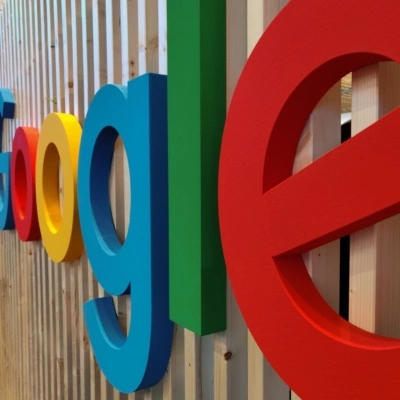With warehouse space at a premium, it is easy to understand why many are turning to dropshipping for their businesses. But this business practice has its own set of obstacles to overcome.
Dropshipping requires very little upfront investment, so it has a relatively low entry threshold, which means you will likely face a lot of competition.
If you want to compete in these crowded sectors, marketing strategies that increase traffic to your website and boost sales will need to be a primary focus for your businesses. With so many options out there – everything from influencer sponsored posts and SEO to Instagram stories and Google Ads – how do you decide which option is best for your dropshipping business?
Since there is no one-size-fits-all promotional strategy and where your buyers come from depends largely on your niche, Google Ads (formerly known as Google Adwords) is normally the go-to way to market products in a dropshipping business.
That’s why, in this blog post, we will explain everything you need to know to create successful Google Adwords campaigns for your dropshipping business.
Let’s get started!
Are Google Ads good for dropshipping?
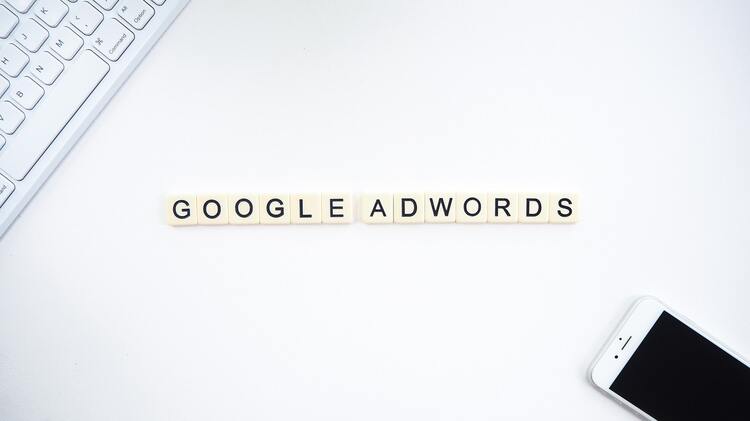
When people are looking for something they want to buy, quite often they run a quick Google search. In those results, the searcher will see both organic results and targeted advertisements.
Those paid ads are placed on the search engine results page (SERP) by companies using paid advertising through Google Ads (formerly known as Google Adwords), a product by Google. This method is often referred to as PPC.
PPC stands for pay-per-click and is a method of paying for ads on a click-by-click basis. PPC is a common practice in the realm of online advertising. (Not to be confused with the abbreviation – CPC (cost per click), which is used within the Google Ads platform itself.)
Google is one of the most visited websites in the world and its ads can reach up to 90% of its users. Compared to organic results, Google ads convert 50% better. The number of ads that receive clicks is over 60% when a buying intent keyword (e.g. shop) is included in the keywords.
With the right keywords, your dropshipping store can get in front of millions of shoppers who are looking to buy products like yours!
How does Google Ads work?
Google Ads is a paid advertising platform and is considered a PPC marketing channel, where advertisers pay per click or impression (CPM) on an ad.
Google Ads offers an effective way to drive qualified traffic (consumers who are searching for products or services like yours) to your business.
Google Ads can help you boost website traffic and increase sales. These ads allow you to reach high-probability potential buyers. You can target people who have already shown that they intend on making a purchase since they are searching and looking to buy or learn more about products like yours.
All businesses that want to rank on Google for specific keywords need to create ads and bid on the keywords they want to target. When a user completes a Google search, a live bidding auction is taking place. The ads that win this auction are shown to the user. Whether your ad will win or not depends on your targeting, bidding strategy, and quality score.
All of those factors (assuming that your ads are approved) will determine if your ads will be shown and in which positions.
Types of Google Ads & their benefits for dropshipping
Google Ads offers five kinds of ads:
- Search
- Display Network
- Video (YouTube)
- Shopping
- Universal Apps
Each one serves a different purpose. Sound overwhelming? Don’t worry - by the end of this article, you’ll understand everything and know what to do with your newfound knowledge!
1. Search ads: attract shoppers who are searching for your products
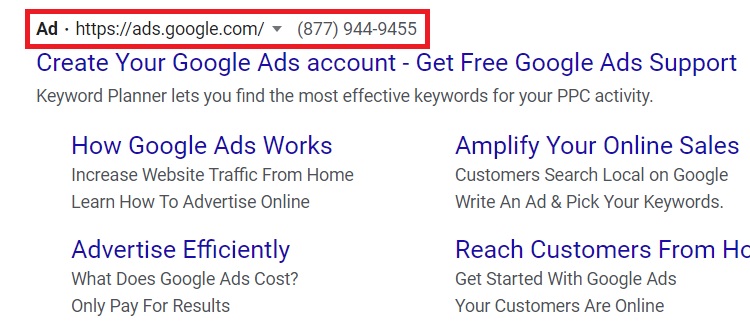
Search ads are text-based and appear before and after organic results on Google search engine result pages (SERPs).
Best used for: getting in front of potential customers who are already actively searching for the products you sell.
With search ads, you’re paying for exposure. Other results shown on the page are displayed according to organic SEO-ranking. If a user is looking for an iPhone case and your dropshipping business sells them, your ads will automatically appear above or below (depending on your bid price) organic results. By paying for an ad, you ensure your products are displayed on specific search queries.
Tips for search ads
Run branded search campaigns
Even though your online store will likely already rank organically, it’s still a good idea to bid on your branded terms. You want to make sure you take up as much space as possible on the first page of Google search results for your brand.
It is also important that you do branded keyword research. This will allow you to see what your target audience is looking for when they google you. Their search queries may give you ideas on how to improve your online presence.
Run competitor search campaigns
With search ads, you can also target your competitors’ branded terms. It’s very likely people looking for your competitors will be interested in your products, so make use of it.
2. Display ads: generate initial interest in your products

Unlike search advertising, display ads and their network aren’t related to search queries. Display ads contain images and are shown according to your targeted specification across a display network.
Best used for: increasing brand awareness.
If a person is not looking for a specific product, he or she might be tempted by a freebie or an amazingly creative idea, and still get into your sales funnel.
Display ads are an excellent choice for new dropshipping stores that sell niche products. You can reach people who are not actively looking for your products on Google just yet. However, they may be interested in your nicely presented offer and learn about you this way.
Tip for display ads
Attract people similar to your remarketing audiences
If you’ve already built some remarketing audiences from your previous visitors, you can use them to expand your top-of-the-funnel audiences. In other words, you can take your high-value visitors and use them to find similar potential customers.
You can do it by using a targeting option called “Similar Audiences”. It lets you get in front of potential customers who have similar web behavior as people from your remarketing campaigns. An ad campaign like this can increase your chances of driving quality traffic!
3. Shopping Ads: get shoppers ready to buy

Google Shopping Ads appear above search results and target people in the consideration phase of a customer’s journey.
However, unlike search ads, Google Shopping Ads don’t let you directly target keywords. Instead, these ads use your Google Merchant Center product data (product name, description, and other values) to determine where your ads would be the most relevant.
The beauty of this type of Google Ads lies in its presentation - detailed information about your products can be featured in the SERP (search engine results page) with images!
Best used for: getting qualified leads.
Google Shopping Ads are especially handy for dropshipping stores if you are running a discount for a limited time - you can display it right in the SERP. These ads provide a quick and full overview of your products’ specifications, such as delivery, discounts, images, or perks.
With these types of ads, you can make it easier for your target audience to understand if your product is a good fit for them without even clicking on your ad. This means the people coming to your store are more likely to make a purchase.
If you want to run Google Shopping ads, you will need to connect your store’s product feed to the Google Merchant Center and decide on your budget and country of sale. The rest is done automatically.
Tip for shopping ads
Use negative keywords to avoid unwanted traffic
You can’t use keywords for your Google Shopping Ads. However, you can use negative keywords to exclude certain keywords that, for example, have low buying intent.
4. Video ads: get leads with engaging format & demographic targeting
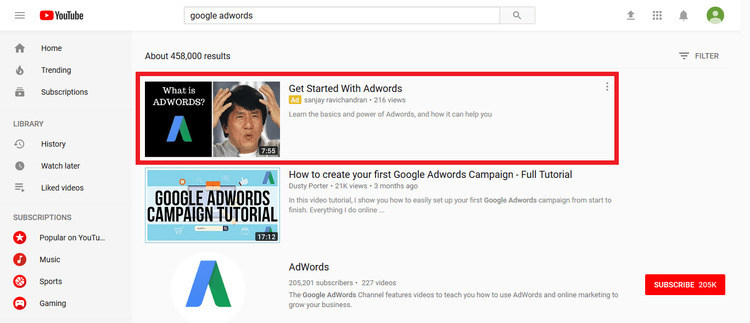
With over 2 billion users worldwide, YouTube is an unparalleled video platform and a great place to get your product in front of your target audience. Google Ads places its video ads before, during, or after YouTube videos and in the YouTube search results.
Best used for: getting your product in front of a relevant audience.
Video ads let you use demographic targeting and reach your preferred audiences based on age, gender, and interests.
In-stream video ads have a 5-second timer before viewers can switch to their intended video, or they must watch the ad for its full duration. You have enough time to get your messaging across either way.
Video ads are often used in combination with display advertising for maximum impact.
Tip for video ads
Narrow down your audiences
If you have the time and budget, create separate video ads that are focused on ultra-specific keywords. This way you’ll make sure your ads are relevant to your target audiences. This, in turn, can help bring more traffic and sales to your dropshipping store.
5. Universal App ads: increase app installs
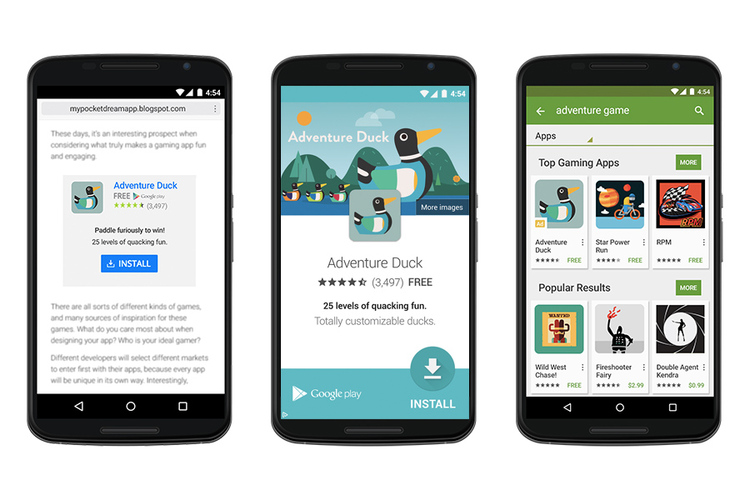
For mobile app owners, the Google network offers a relevant way to reach your target audience through universal app ads. When you upload ad copy and an image to Google Ads, it places them together and displays them for your target group.
Best used for: getting more people in your sales funnel through your app.
Universal App Campaigns create easy advertising access to Google’s network, directing users to the Google Play Store or Apple App Store. However, the process requires more considerations than just opting into Google App Campaigns.
There are five options for UACs. Each one targets one of the following:
- Installs
- Installs (advanced)
- Action
- Value
- Re-engagement
All these options come with unique specifications for implementation, optimization, and migration. Every one of them is developed to target different parts of your app’s marketing funnel.
If you don’t have an app for your dropshipping store, Universal App ads will not be useful for you.
How to increase ROIs for Google Ads
To increase your Google Ads ROI, you need to have a solid budget strategy in place. Once you have it figured out, start implementing it, monitor results, and make needed adjustments. For example, you may find that you need to increase or decrease your budget, kill some ads, or campaigns altogether. Keep trying different approaches and tactics.
How to calculate ROI for Google Ads
When calculating your ROI for Google Ads, you will need to know two important numbers for your business: your profits and expenses. You need to take the revenue from Google Ads, subtract your overall costs, then divide by your overall costs.
ROI = (Revenue - Cost of goods sold) / Cost of goods sold) x100
Let’s say you sell sneakers on your dropshipping store. You buy them for $100 from your wholesaler and sell them for $230 per pair. Say, you spent $300 on Google Ads and sold 10 pairs.
Your total sales: $2300
Your total costs: $300 + $1000 = $1300
This is how you’d count your ROI:
(2300-(1000+300))/(1000+300))x100%=77%
When evaluating your Google Ads ROI, tracking your conversions is essential. A conversion in Google Ads is an action that a user takes on your website after clicking your ad. It could be a purchase, a sign-up, or something else you defined.
Things that can get in the way of profitable Google Ads are imprecise targeting, broad keywords, or using default settings. All of this can result in low conversion rates and costly ads.
Knowing your conversion rate alone is not enough. You have to know which campaign elements contributed to the number and why. Look at such campaign elements as your targeting, visuals (where applicable), and text.
Which kind of ads perform the best?
While Google Shopping ads are great, they tend to be quite expensive. It can take a lot of tweaking before you are able to find products that perform well enough that their ad costs are worth it.
Generally, the best results come from keywords dedicated to targeting the bottom of your sales funnel.
For example, a keyword like “shoes” is not a good one - it’s too broad and doesn’t have a buyer’s intent. But a keyword like “Nike Air MX500” focuses on the bottom of the funnel (people using it know exactly what kind of shoes they want and are searching for deals).
Due to this, DSA (dynamic search campaigns) perform very well. Campaigns like these are keyword based. Google scans your dropshipping store and uses specific keywords from your product headlines, descriptions, and landing pages.
For DSA to function properly, you need to make sure your product names and/or descriptions have detailed information, such as product identifier, code, model, etc.
Also, you need to be absolutely sure that your website is accessible by Googlebot. Googlebot is a fancy name for Google’s web crawler. It means that Google is able to see your website and its content. If you’re not sure if and how your page is seen by Google, just go to www.google.com, enter your page’s URL, and check if it’s there. See the example below:
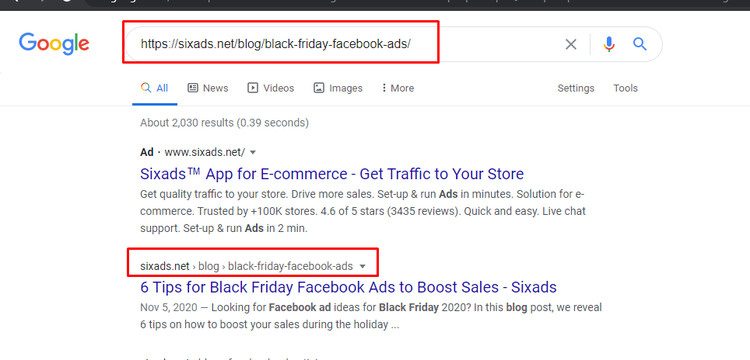
If you want to see how Google sees your page, the easiest way is to click here:
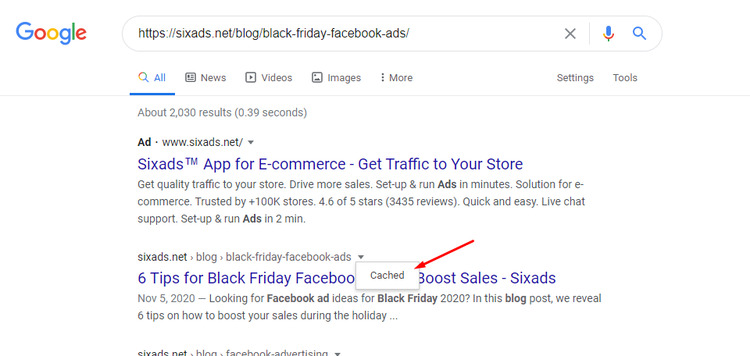
After opening the cached version, if you notice that some of the information you have on the page is not there, it can mean that there are issues with how Google sees your pages and content.
Tips for improving your ROIs
1. Examine your current situation
Improving ROI starts with reviewing which campaigns and ad groups work and which ones don’t. Start by delving deeper into the ones responsible for the largest share of your paid budget.
Then, determine which elements of your campaign need to be optimized. Use Quality score (QS) as a baseline - the higher the score, the less you pay per click in relation to where your ads appear.
2. Determine your quality score
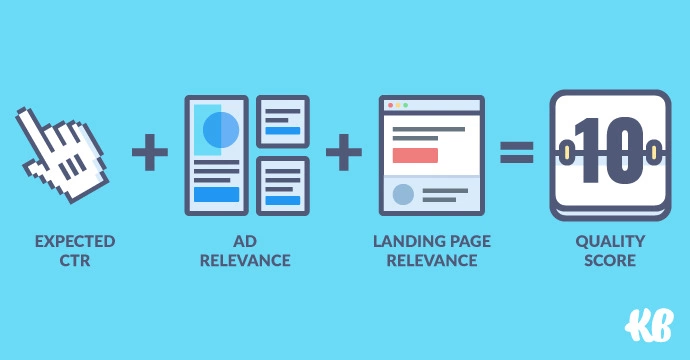
Increasing your quality score will lead to increasing your overall return on investment. But what determines the score? Google assigns a numerical value to your ads based on your:
- CTR (click-through-rate) - How many clicks your ad gets in relation to its views. Google sees your ad as irrelevant when it’s shown based on your keywords but gets few or no clicks.
- Ad relevance - Your keywords need to be relevant to your ads and the user’s search query. Google analyzes the language and context of your ad to understand how well it fits the keyword.
- Landing page quality - It indicates your landing page’s performance once the visitor clicks on the ad. Your keywords should reflect your ad, which should align with your landing page. In other words, your ad needs to align with the user’s intent.
If your ad promises that you have a sale on Nike shoes, make sure the user sees a discount for those shoes on your landing page. Otherwise, your page quality will be considered low.
Also, things like annoying pop-ups and scammy looking pages can decrease your landing page quality. Even with tools that easily disable pop-up windows for website visitors, a web page with lots of push notifications is not a good landing page.
Historical Google Ads account performance
After considering the CTR, Ad relevance, and landing page quality, Google will determine your Quality Score and assign you a ranking from 1 to 10.
Quality Score has a significant influence on the cost-efficiency of search campaigns. It also helps determine ad rank and affects your ROI. If your score ranks above average, for example, 8, you’ll pay less for your pay per click, and your ads are likely to have a better position on the search results page.
3. Review your keyword performance
Relevance is a dominant metric in determining QS, so you need to review your keywords and their grouping. Look at your CTR, it’s one of the main metrics that show your keywords’ performance. For example, if your keyword has a lower CTR than 1%, it may be too general. In such a case, you could either remove it or make it more specific.
Structure plays a significant role, too, as different keywords should belong to different groups and be separated into individual campaigns. The keywords used for different groups need to be consistent with the text on their landing pages and updated based on recent search results.
4. Improve ad group targeting

Don’t overlook ad groups. Look for keywords in groups with low-quality scores in comparison to well-performing ones. Consider moving these keywords to a more relevant ad group based on their score similarity.
When the Google algorithm comes across a keyword without enough data, it automatically checks ad groups and campaigns as a whole and their performance indicators. If it’s not grouped, and separate keywords lack substantial historical data, Google will determine the bid on the individual keyword’s data.
5. Make use of remarketing
Make the most of remarketing display ads. They serve as a reminder to visitors who visited your site at least once but didn’t make a purchase. Remarketing campaigns are your best shot at making sales with Google Ads because you’re targeting people who are already considering your products.
When your leads don’t result in an immediate sale, use a remarketing strategy to move people down the funnel.
One of the most important things to consider is how long you follow the user after they leave your store. Google allows you to keep people in your remarketing lists for up to 540 days. However, that would rarely be a good option - who wants to see an ad for the same pair of funny socks for over a year? Not so funny anymore.
Think about what kind of product you sell and how long it takes for the user to decide whether to buy it or not. For example, if you’re selling something like socks, you could retarget your users for a week - it’s generally a quick purchase. But if you’re selling fancy food processors, you can follow your users for a month since it usually takes longer to decide whether to buy kitchen appliances or not.
6. Review automatic settings
Don’t stick with the default settings by Google. There are quite a few things that can be tweaked to get better results.
For example, when setting up a campaign with a predefined audience list, Google provides its default choice to automatically expand its reach once the list is surpassed. While such an expansion is suitable for cold audiences, it’s not good for remarketing.
With remarketing, you expect your ads to be shown only to people who have visited your site. Target expansion in such a case can expand the remarketing audience to cold audiences, and this goes against the whole purpose of remarketing campaigns.
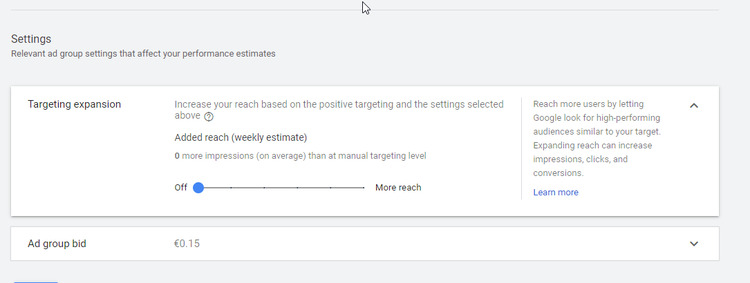
Another default setting you may want to look out for is advertising on mobile apps. If you’re focusing on display advertising, you might want to revisit your placement section and deactivate mobile app targeting. The traffic coming from apps is usually low quality - users don’t spend much time on sites, there’s a lot of bounced traffic, and little to no conversions.
7. Make changes based on stats
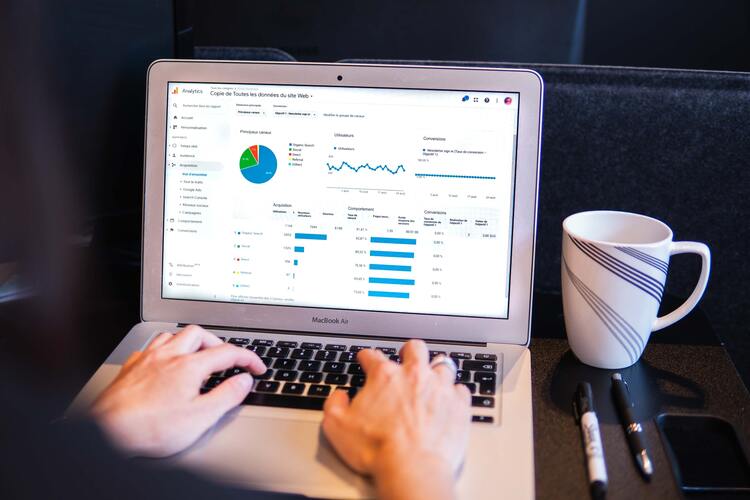
Get into the habit of periodically reviewing metrics relevant to your quality score and ROI. These metrics include:
- Click-through rate (CTR) - The percentage of visitors who are exposed to your ad and then click on it.
- Cost per click (CPC) - The price you pay for every click on your ad.
- Conversion rate - The percentage of people who converted (e.g. bought something) out of all those who visited your website.
- Cost per conversion - The average amount you pay for a conversion from your ad.
Altogether, these metrics are performance indicators for your PPC campaigns. If you’re just starting with your dropshipping business, compare those metrics to your industry average, and you’ll see if your CPC is too high or your click-through rate is below average. Once you’ve run Google Ads for some time, you’ll have regular reports and be able to compare your results with your average.
Depending on which indicator is underperforming, you can decide what strategic actions to take to improve the situation. Reviewing and working on improving every indicator will help you increase ROI from your ad campaigns.
How to set Google Ads budget
When choosing your daily budget for a Google Ads campaign, think of your advertising goals and how much you are willing to spend on them. Don’t be afraid to make a mistake - you can edit your budget at any time during the campaign.
The first steps
More established businesses have monthly quotas, others use their revenue as a guide for budgeting. If you’re new to the world of PPC, spend time researching your market, clarify campaign goals, and create a test campaign before setting a monthly budget.
If you are just starting out, walk yourself and your business through these three steps so you can get a better understanding of that market. Real knowledge is the best way to build a successful marketing campaign.
1. Do market research
It’s better to be over-prepared than under-prepared. Research will help you gain a broader understanding of the market and similar competing products advertised through Google Ads.
Use the Google Keyword planner to explore similar keywords to your products, their price, competitiveness among other advertisers, and the demand generated by searches every month. Then, go through your product listing, and determine which keywords are the most cost-effective for your store.
2. Define your goals
Precision in your budget is closely tied to your goals. Do you want to raise awareness of your brand, or is it a traffic increase that you’re after?
With a clear objective, you can predict and indicate your target audience’s behavior, interests, location, and use of devices, all of which are important for shaping your budget.
Your campaign goals might be:
- sales
- leads
- website traffic
- brand awareness & reach
- product & brand consideration
- app promotion
Whichever goal you choose to focus on, remember to remain ROI-oriented and aim to maximize profits with a set budget.
3. Create a test campaign
Once you have some theoretical knowledge, it’s time to put it into practice. Assuming that you are setting a Google ads budget for the first time, your goal shouldn’t be sales (just yet) but data instead.
Looking through the Keywords Planner and analyzing competition is an important piece of the puzzle. However, you’ll only receive precise numbers once you have a Google Ads campaign up and running.
Budget guidelines
Let’s say your dropshipping store converts at a 1% rate from Google traffic. With a conversation rate of 1%, 100 visitors equal 1 sale, which leaves us with $1 per 1 click (CPC).
In other words, if you invest $100, you get 100 clicks at a 1% conversion rate. As a starting point, 1% is going to be your baseline for this test, meaning that to get 1 sale, you’ll need to spend $100 on Google Ads.
If you set a $100 budget per day, $100/day = 1 sale/day. The same principle applies if you set $10/day = 1 Sale/10 days. Then you get a purchase every 10 days.
If your budget is $1000 per month, you will spend $33 per day.
$1000 / 30 day = $33
1% = 1 sale every 3 days.
This example is just a general guideline for testing. A precise amount depends on factors like budget allowance, marketing goals, and business maturity.
When employing this example, you might learn that 3 products sell continually, and other products don’t get any traction or clicks. In the first case, you can increase your bid, but the second may mean you need to optimize your landing pages or reconsider your targeting and keywords.
Over time, you’ll know your return on ads from what does and doesn’t work. Then you can start spending incrementally more on what is converting. This way, you can predict and set your monthly budget.
Analyze ad performance
Once you have a wealth of data from testing campaigns and you’ve launched purposeful campaigns for your products, it’s time to analyze your activity. This calls for monitoring and refining your strategies based on your insights.
With these tips, you can stretch your ad spending to its full potential. Just remember to test and adjust campaigns to optimize both their performance and your ROI.
How to effectively use Google Ads for dropshipping
To beat your competition, you will need a sound and successful Google Ads budgeting and ad creation strategy. Below are some recommendations to follow:
- Double-check the basics. For example, see if your Google Ads is correctly connected to your store and you can track your sales.
- Build your keyword lists gradually. Narrow your focus by testing a few keywords, then gradually scale your budget and the keywords you’re targeting.
- Polish your landing pages. Your work doesn’t end with Google Ads. You also need to create unique pages corresponding to different campaigns and their keywords. Don’t forget to A/B test elements such as images or call-to-action buttons.
- Use Remarketing. Bring back potential customers who visited your store but didn’t make a purchase. They’re already familiar with your store and may only need one more push.
- Keep up with Google Ads updates. Google favors those who embrace their new rollouts. Bookmark this page to stay up to date with the latest news about Google Ads, adjust your ads accordingly, and beat your competition!
Automate your Google Ads
A well-thought-out Google Ads strategy can drive shoppers who are already looking for what you’re selling to buy from you rather than a competitor.
But, like all things worth working for, mastering this paid channel comes with its own difficulties. There are lots of intricate details you need to understand to run successful Google ads.
If you ever feel lost - or don’t want to spend hours watching tutorials, it may be worth the investment to try automated Google Ads. sixads is can do just that. We can run Google ads for you, so you can spend your time scaling your dropshipping business.
